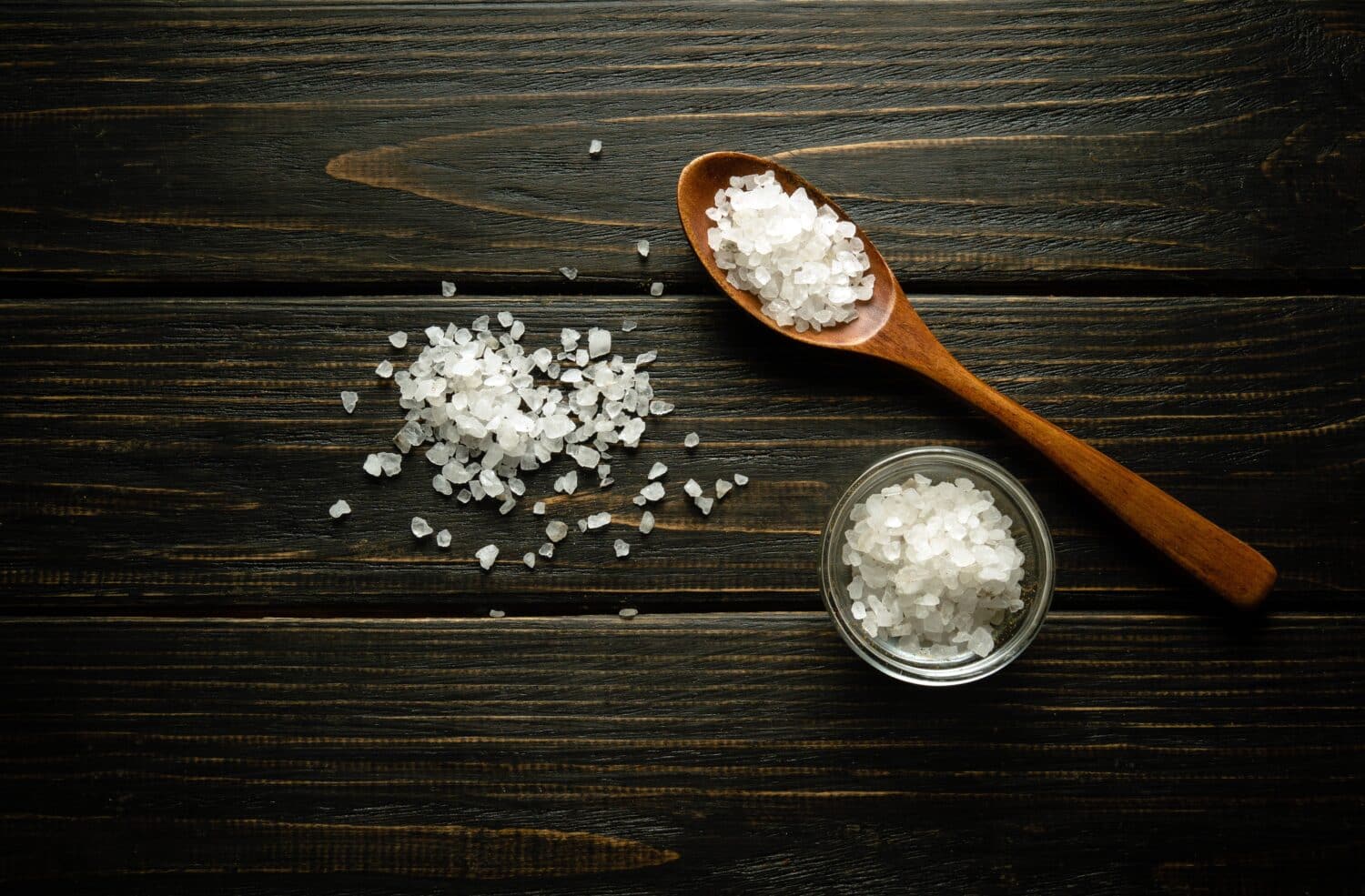As you meander your way down the aisle of seasoning at your grocery store, you may notice several different salt options. When pink salt and sea salt are placed next to each other, how can you tell what sets them apart other than their difference in color? Is one actually healthier than the other?
Beyond color, the main difference between pink salt and sea salt is their mineral composition. Pink salt has 84 beneficial minerals, while sea salt only has 72, resulting in many people viewing pink salt as a healthier option.
Even so, it can still be confusing to know which one to use and how these two salts stack up to one another. Let's take a closer look. Here's everything you need to know about pink salt and sea salt.
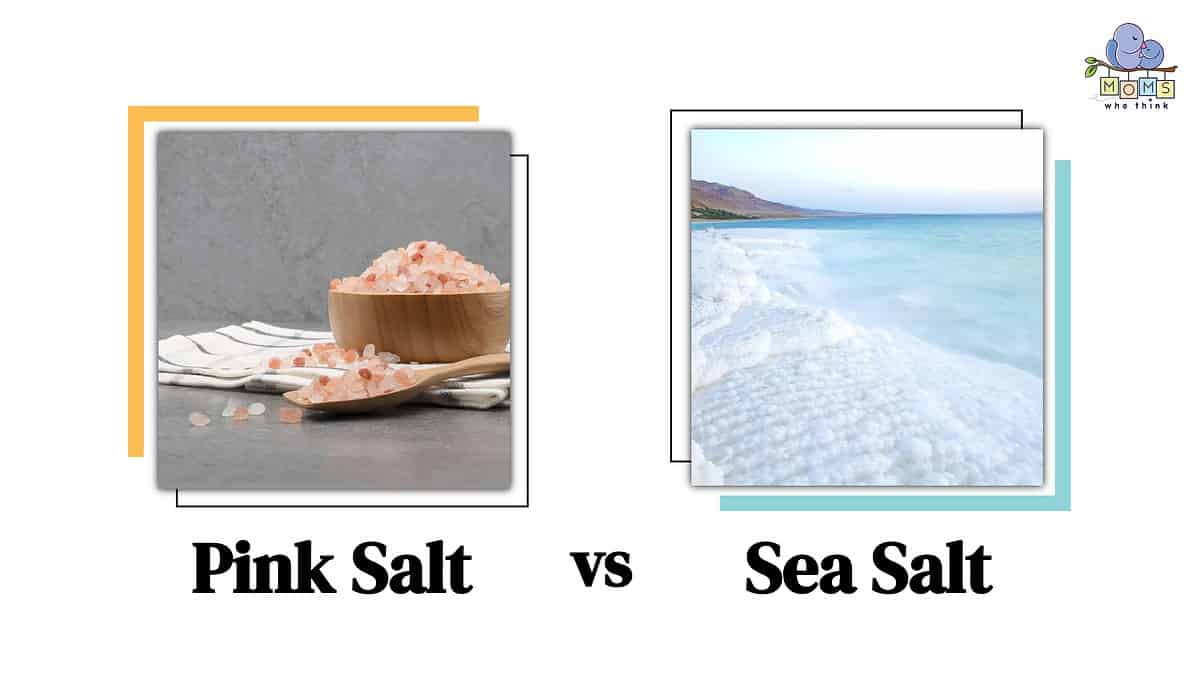
©
What is Pink Salt?
Pink salt can also be known as Himalayan pink salt. True and genuine Himalayan pink salt is found and hand-mined from ancient salt deposits in the Himalayan mountains. However, be sure to check the label of the product to make sure that it's from this source. Many brands and varieties are on the market today, and pink salt has become a popular product.
While it may look unique, the pink hue of this salt is normal and natural. The color comes from the minerals and iron oxide present in the salt. Additionally, pink salt is used in a variety of different ways, not just in the kitchen, but we'll dive into this later.
What is Sea Salt?
Sea salt comes from evaporated saltwater in both saltwater lakes and the ocean. While table salt is mined from the ground and lacks additional nutrients, sea salt is minimally processed. This is what leads to its course appearance as well.
Because sea salt is more naturally produced, it's typically regarded as a healthier option than table salt. Table salt has many of its nutrients and minerals removed, whereas sea salt contains small amounts of potassium and calcium.
Pink Salt vs. Sea Salt: What are the Differences?
Both pink salt and sea salt have grown in popularity in recent years. These two salts obviously differ in color, but what else sets them apart? Here are four key differences:
Where the Salt is Sourced
As we've briefly mentioned, pink salt is often derived from the Himalayan mountains, whereas sea salt is sourced from saltwater. While both of these salts have only grown in global popularity recently, their origins are believed to date back millions of years.
The Himalayan Salt Company states that an ancient ocean used to exist where the Himalayan mountains are today. When the ocean dried up, the crystal salt deposits were left behind and, to this day, are largely protected from pollutants. The oldest Himalayan salt mine is thought to be more than 300 million years old and is located in the Punjab region of Pakistan. The salt is hand-mined and preserved to retain its mineral content and pink color.
While salt itself dates back to ancient China and Egypt, sea salt deposits can be naturally found near the Mediterranean, according to Britannica. Additionally, one of the largest factories is found in Manaure, Columbia, and manmade production also exists in other areas of the world like Norway and the Gulf of the U.S.
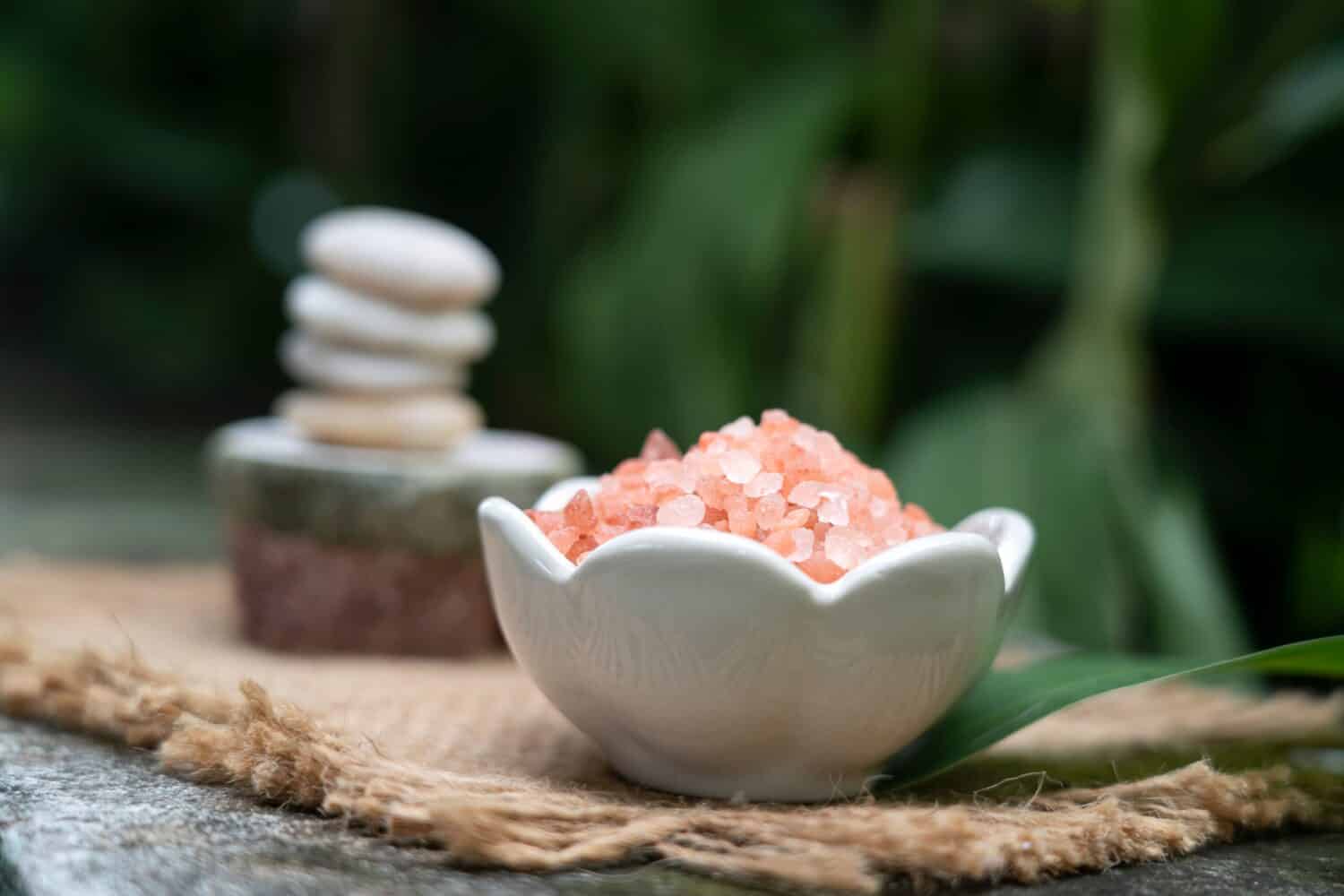
©bambambu/Shutterstock.com
Mineral Components
According to Medical News Today, pink salt has up to 84 different minerals, while sea salt only has 72. Both largely consist of sodium chloride and also contain calcium, potassium, and magnesium. Pink salt, however, also offers minerals like zinc and iron.
It's important to note that pink salt and sea salt have more mineral content than table salt. This is why many believe these two salts are healthier sodium choices.
Texture and Appearance
Pink salt is known for its rosy pink coloring that comes from minerals, while sea salt is white or grey depending on the impurities and minerals that were in the water where the salt was collected. Pink salt is also typically found as larger crystals in a salt grinder, while sea salt is sold in a variety of different textures. You may find it finely ground, coarsely ground, or in flakes.
Uses
Both pink salt and sea salt have their place in the kitchen. They can be used in baking and cooking to add seasoning and texture. Both are great options to increase flavor or add a yummy crunch to a finished recipe. You may also see both types of salt included in bath salts as their mineral content is thought to help promote healthy skin.
Outside the kitchen, however, pink salt has its own unique uses. Pink salt lamps can be used as a decorative item and are thought to help purify the air. Pink salt is also sometimes used to aid in respiratory relief, though there is no scientific evidence that this is true. Some use pink salt blocks to serve platters or trays as well.
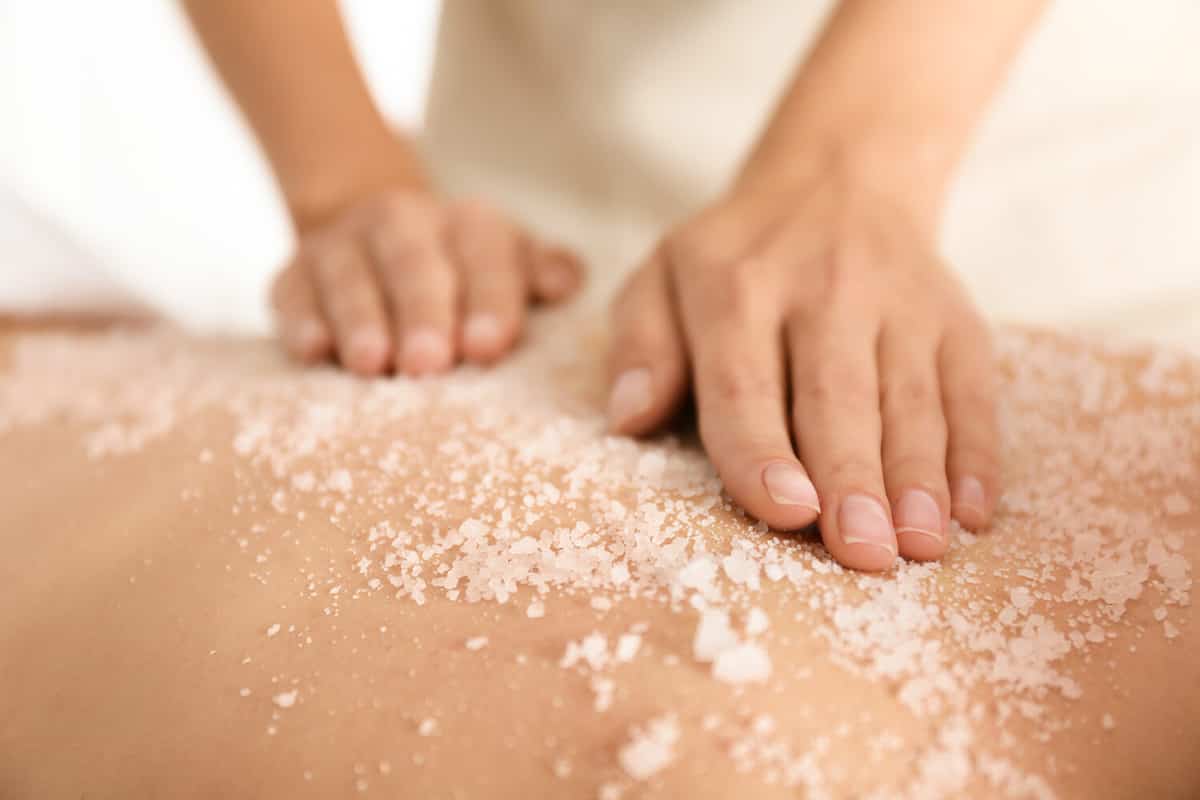
©New Africa/Shutterstock.com
Pink Salt vs. Sea Salt: Nutritional Value
Because both pink salt and sea salt consist largely of sodium chloride, they do not have calories, proteins, carbs, or fat. Where they shine is in their added minerals, which we don't see in normal nutrition information.
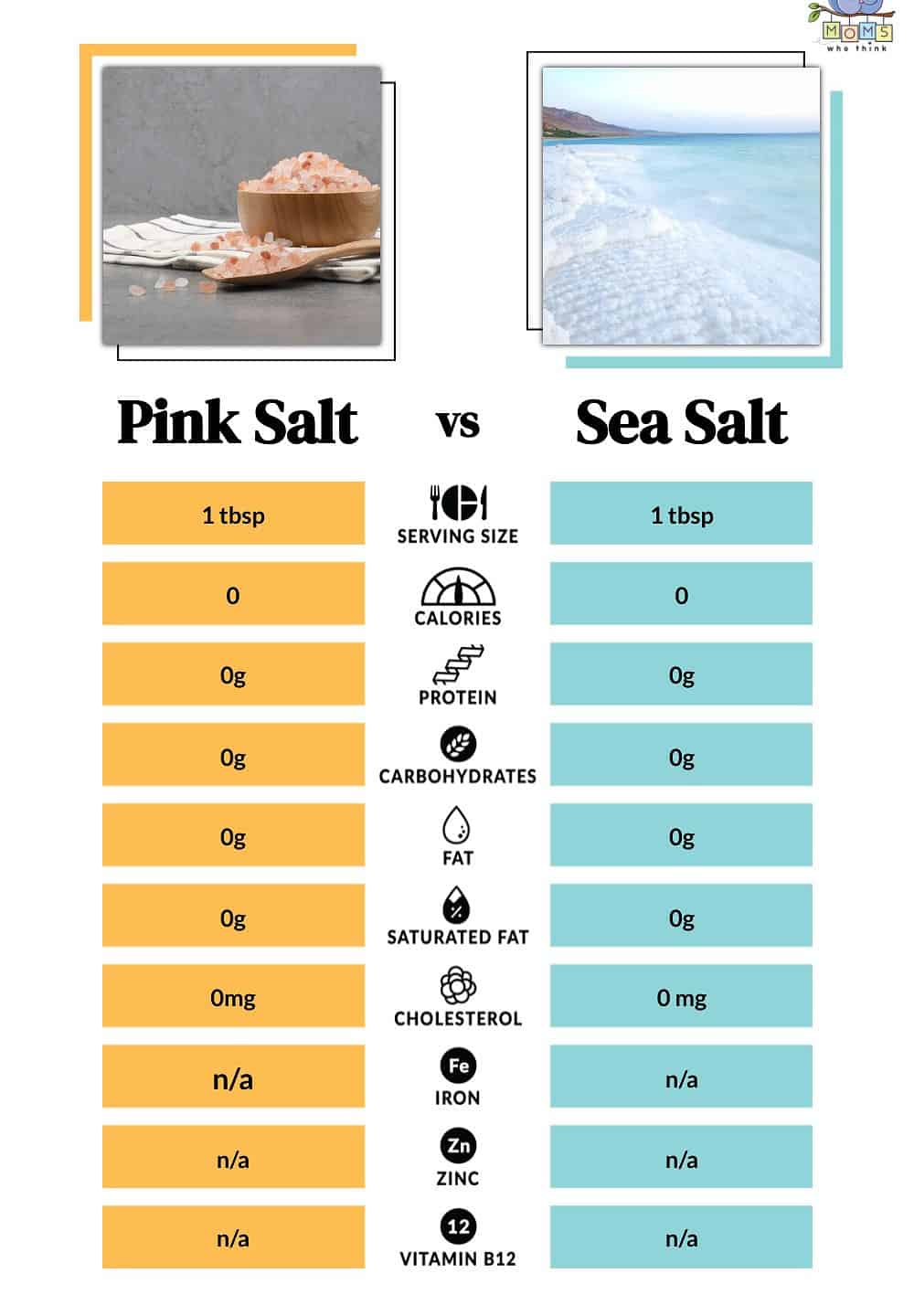
©
Which One is Healthier: Pink Salt or Sea Salt?
We've learned that pink salt has more minerals than sea salt. It can also be seen as a healthier option because it's protected from air impurities due to its secluded location in the Himalayan mountains.
However, the trace minerals found in pink salt are incredibly low, so even though it's often viewed as a healthier choice, there is actually no scientific evidence that pink salt is healthier than sea salt. Both are great, less-processed options of sodium chloride. And, while too much of any kind of salt in our diets can have nasty side effects, we also need sodium chloride as part of a healthy diet.
Healthy amounts of salt can provide benefits like:
- A clear immune system.
- The creation of hydrochloric acid that our stomachs need to aid digestion and kill microbes.
- Providing healthy levels of adrenals to avoid low blood pressure.
Both pink salt and sea salt are also known for their addition of minerals that can boost electrolytes. Additionally, while there isn't science-backed evidence, these salts are thought to help provide relief for skin conditions like eczema.
Ultimately, whichever one you choose is going to be a healthy option as long as it's used in moderation. Both offer additional minerals that can't be found in table salt and promote a healthy lifestyle.
Can you Substitute Pink Salt with Sea Salt?
Absolutely! Pink salt and sea salt are very similar in taste and how they're used in the kitchen. If you choose to swap one for the other, just keep in mind the level of coarseness you need. Course sea salt and regular pink salt can provide similar textures. But if you need finely coarse salt, you may want to choose a different substitute, like table salt.
Final Thoughts
While natural pink salt is found in the Himalayan mountains and sea salt is derived from saltwater, both salts provide health benefits from their added minerals. They can be used in a variety of ways, both in and out of the kitchen, and one has not been scientifically proven to be healthier than the other. Whichever salt you choose, just be sure to use it in moderation to maintain a healthy lifestyle.
Recipe Card
Print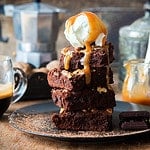
Himalayan Pink Salted Caramel Brownies
- Total Time: 50 minutes
Ingredients
Brownies:
- 1 cup unsalted butter
- 2 cups granulated sugar
- 4 large eggs
- 1 teaspoon vanilla extract
- 1 cup all-purpose flour
- 1/2 cup cocoa powder
- 1/4 teaspoon baking powder
- 1/4 teaspoon salt
Salted Caramel:
- 1 cup granulated sugar
- 1/4 cup water
- 1/2 cup heavy cream
- 1/4 cup unsalted butter
- 1 teaspoon Himalayan pink salt (plus extra for sprinkling)
Instructions
Preheat your oven to 350°F (175°C). Grease and line a baking pan with parchment paper.
In a saucepan, melt the butter over medium heat. Remove from heat and stir in sugar, eggs, and vanilla extract.
In a separate bowl, whisk together flour, cocoa powder, baking powder, and salt. Add the dry ingredients to the wet ingredients and mix until well combined.
Pour the brownie batter into the prepared baking pan and spread it evenly.
Bake for 25-30 minutes or until a toothpick inserted into the center comes out with a few moist crumbs.
In a saucepan, combine sugar and water. Cook over medium heat, swirling the pan occasionally until the sugar dissolves and turns amber in color.
- Remove from heat and carefully whisk in heavy cream and butter until smooth. Stir in the Himalayan pink salt.
Once the brownies are cooled, pour the salted caramel over the top, spreading it evenly. Allow it to set for about 15 minutes.
Lift the brownies out of the pan using the parchment paper. Cut into squares, and sprinkle each square with a pinch of Himalayan pink salt.
- Prep Time: 20 minutes
- Cook Time: 30 minutes
Nutrition
- Calories: 250
- Fat: 15 g
- Carbohydrates: 30 g
- Fiber: 1 g
- Protein: 3 g
The image featured at the top of this post is ©VITALII BORKOVSKYI/Shutterstock.com.
